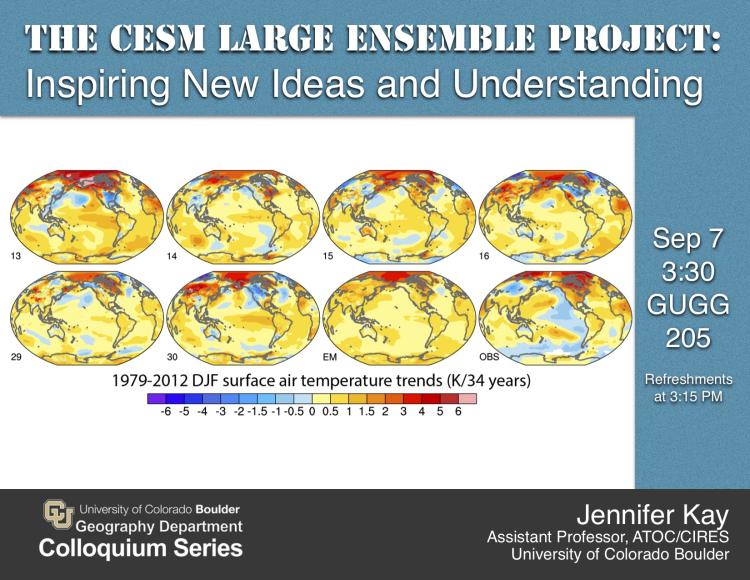While internal climate variability is known to affect climate projections, its influence is often underappreciated and confused with model error. Why? In general, modeling centers contribute a small number of realizations to international climate model assessments [e.g., phase 5 of the Coupled Model Intercomparison Project (CMIP5)]. As a result, model error and internal climate variability are difficult, and at times impossible, to disentangle. In response, the Community Earth System Model (CESM) community designed the CESM Large Ensemble (CESM-LE) with the explicit goal of enabling assessment of climate change in the presence of internal climate variability. All CESM-LE simulations use a single CMIP5 model (CESM1-CAM5). The core simulations replay the twenty to twenty-first century (1920–2100) 40+ times under historical and representative concentration pathway 8.5 external forcing with small initial condition differences. Two companion preindustrial control simulations (fully coupled, prognostic atmosphere and land only) allow assessment of internal climate variability in the absence of climate change. Examples of scientists and stakeholders that are using the CESM-LE outputs to help interpret the observational record, to understand projection spread and to plan for a range of possible futures influenced by both internal climate variability and forced climate change will be highlighted the presentation.
Jennifer E. Kay
Assistant Professor, ATOC/CIRES
University of Colorado Boulder
Hosted by Collen Reid

